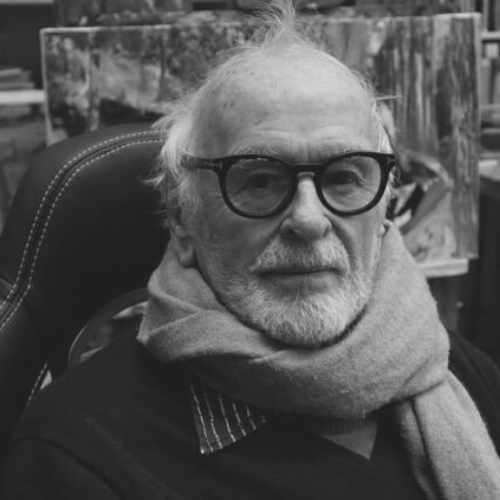Keith Grant was born in Liverpool at the beginning of the 1930’s. From an early age he was spellbound by the mystery and beauty of the natural world that he experienced in the countryside, then in walking distance from his suburban home. Each day small natural wonders were revealed such as finding a skylarks nest with its clutch of olive- green eggs, an adder coiled into a circle asleep in the warm sunshine and small ponds of clear water inhabited by newts, sticklebacks, tadpoles and other aquatic creatures. The sky over those now vanished fields Grant observed with deepening wonder as the serried ranks of clouds accompanied the everchanging mood of the seasons, while the range of blues from the palest to the deepest hues spoke of infinity.
Winter was Grants window to the north and it was to the northern horizon he looked eagerly for the clouds which might bring the transformation of snow. For the snow not only changed the local countryside but it transformed the nearby docklands, creating of cranes, pylons, ships, masts and rigging lace-like veils and glittering surfaces of magical beauty. These annual winter epiphanies instilled in Grant a longing to experience the far north which when later realized became a lifelong odyssey. In parallel with Grants all absorbing interest in the natural world grew a desire to find a means to celebrate it.
He began to reinterpret his experiences in the field by drawing and painting for which he had an innate talent. By this means Grant began to express through art his awe, wonder and joy in nature and the mystery of existence. Grants work as an artist began by his response to the gentle pastoralism of the English countryside but soon sought the inspiration of the elemental landscapes of the north. The natural marvels of the Aurora Borealis, active volcanos, mountainous islands and vast horizons became his subject matter, as did the glaciers, mountain ranges and the vast forests of the northern landmass.
Grant has never worried that such an approach to nature and his art derived from it might be anachronistic, a remnant of the long past romantic movement in painting. Keith Grant has always maintained that his vocation as an artist was not prompted by the desire to follow art as a career but by his need to give visual expression to the beauties of the natural environment.
In 1955 Grant gained a place at the prestigious Royal College of Art in London and in 1960 was awarded a Norwegian State Scholarship through the British Council to study in Norway. Grants work can be found in many public and private collections in the UK, Europe, America and other parts of the world.

